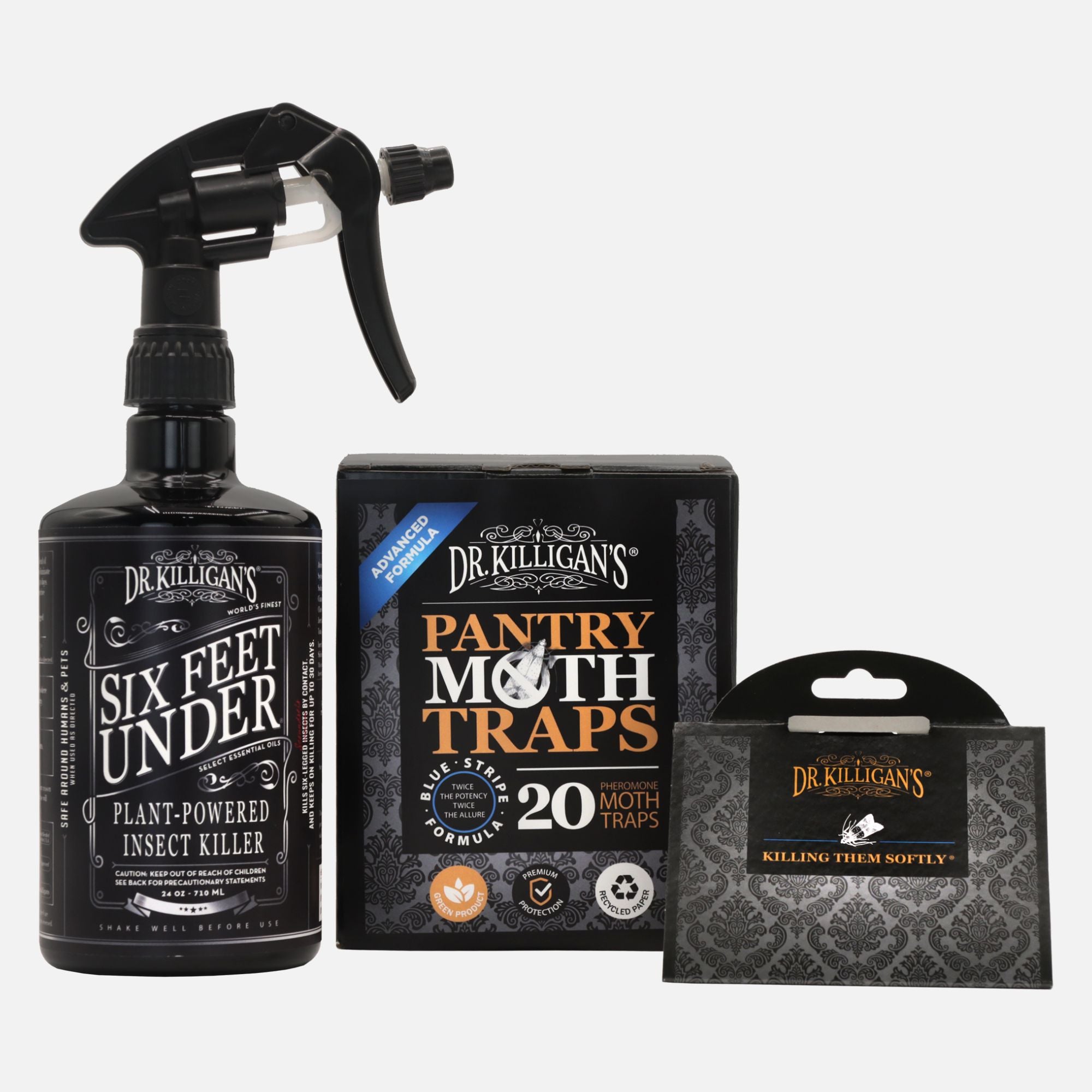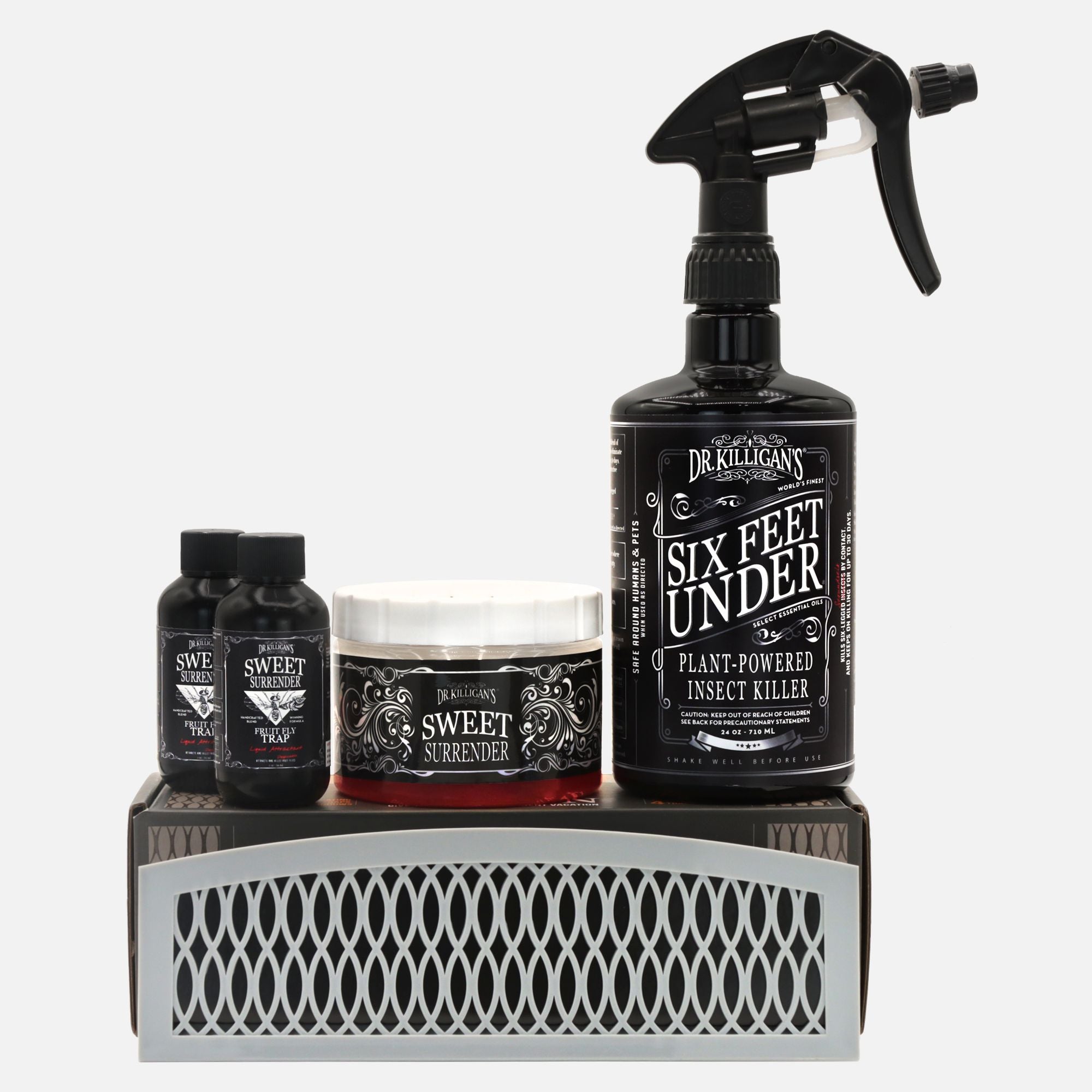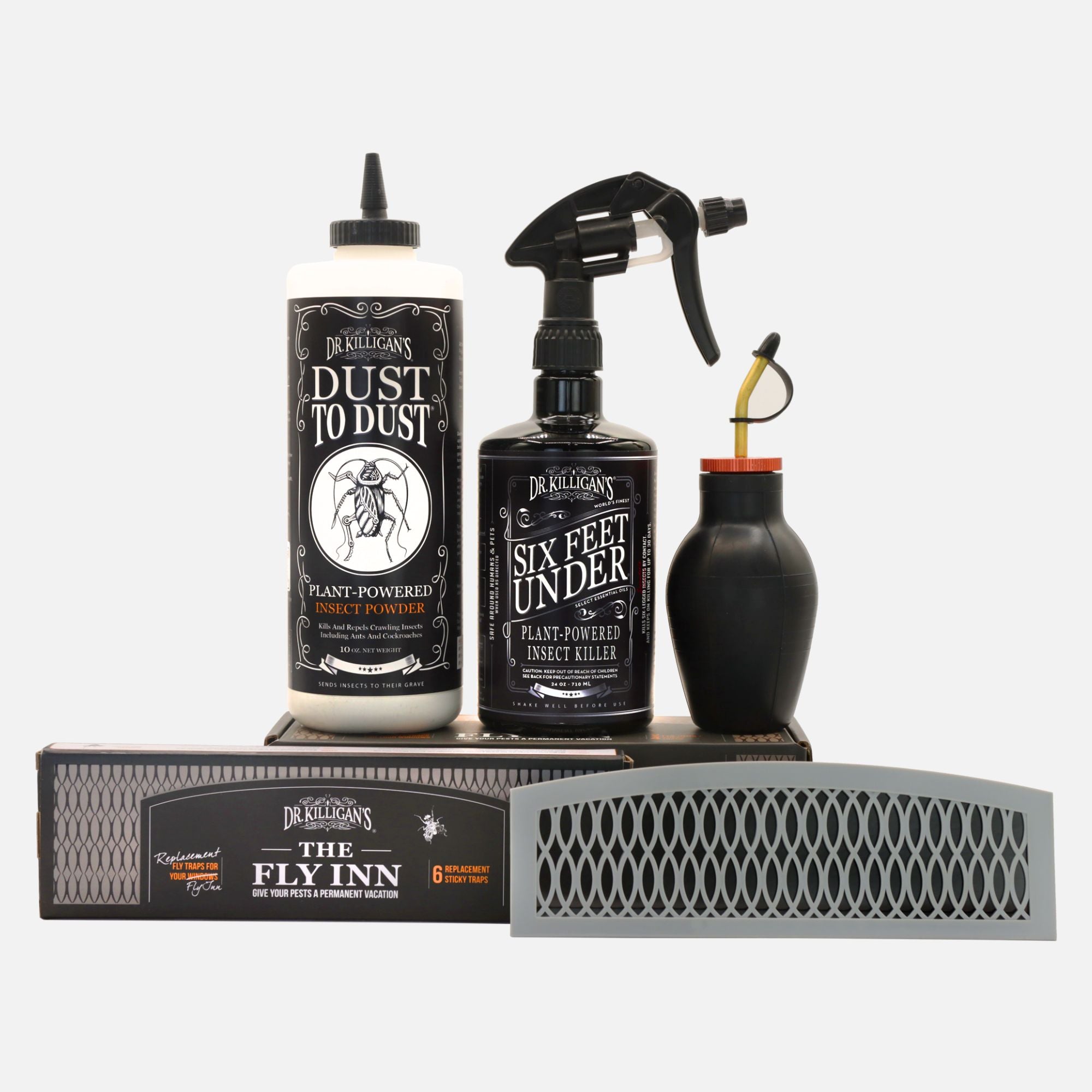Choosing to hire pest control services often means relinquishing full control over the locations and types of chemicals used, which can raise significant concerns, especially for households with young children, pets or for individuals who are striving to maintain a non-toxic environment.
We all want a serene and comfortable home, free of pests. But it's important that we also ask ourselves these questions:
- Is it safe to stay in my home after pest control?
- Where (exactly) is pest control sprayed?
- What chemicals are being used?
These questions are valid. They highlight the need for understanding and a more mindful approach to pest control.
Is it safe to stay in my home after pest control?
The answer to this question depends on the type of pest control treatment used. Here’s what you need to know:
General guidelines:
Using harsher pesticide treatments can pose significant health risks, necessitating caution when re-entering your home. It is generally recommended to avoid entering your home for hours after pesticide application to mitigate exposure to toxic airborne chemicals. These compounds can linger and pose serious health risks if inhaled. After the initial wait period, further minimize risks by ventilating your home with open windows and running fans.
Type of treatment matters:

The time it takes in which you can return varies based on the specific treatment used:
- Toxic pesticides: This treatment may require more time for air quality levels to normalize.
- Milder treatments: Some treatments, such as Dr. Killigan’s eco-conscious pest products, might not require you to leave your home.
- Fumigation: More intensive treatments like fumigation necessitate a safety check before re-entry due to a higher risk of pesticide exposure.
Understanding health risks and EPA guidelines:
The EPA has identified several health risks associated with pesticide exposure, including:
- Irritation to the eyes, nose and throat
- Damage to the central nervous system and kidneys
- Increased risk of cancer
- Symptoms such as headache, dizziness, muscular weakness and nausea
More serious long-term exposure to certain pesticides can lead to damage to the liver, kidneys, endocrine and nervous systems.
In response to these risks, the EPA recommends reducing pesticide exposure by advocating for non-chemical pest control methods as safer alternatives. This approach not only mitigates immediate health risks but also prevents long-term health issues.
For further guidance on this, read their recommendations here: Do you really need to use a pesticide?
Additionally, for an in-depth guide on ensuring a healthy indoor environment and reducing pesticide use in your home, consider reading our article:
Consider non-toxic options and the benefits of choosing Dr. Killigan’s DIY pest control solutions:
Choosing Dr. Killigan’s DIY pest control solutions reduces exposure to harmful chemicals and offers comprehensive benefits for your health and the environment:

- Health safety: Minimizes health risks with non-toxic ingredients, ensuring a safer living environment for families and pets.
- Environmental impact: Promotes sustainability by reducing pollution and conserving resources, supporting ecological balance.
- Effective & tailored solutions: Provides customized pest management strategies that are both effective and specifically suited to your home’s needs.
- Full control & transparency: Allows complete control over the application process, with clear information about all ingredients used, ensuring there are no hidden chemicals.
- Prevents resistance: Mechanical traps and natural methods avoid the issue of pests developing resistance, ensuring long-term effectiveness.
These eco-friendly solutions align with our commitment to "Get rid of household bugs without harsh chemicals," ensuring that you can maintain a pest-free home without compromising safety or environmental integrity.
To further understand how Dr. Killigan’s prioritizes your safety, trust and environmental responsibility, explore these insightful resources:
- Putting customers first: The power of full disclosure from Dr. Killigan’s
- Harnessing the best pest control with mechanical kill: A wholesome approach to preserving our sanctuaries
By choosing Dr. Killigan’s DIY solutions, you’re not just protecting your space; you’re ensuring a healthier environment and a safer future for everyone under your roof.
Further reading:
To deepen your understanding of effective pest management practices and compelling reasons on why to hold off on calling a fumigator, read these informative articles:
- The ultimate guide to pest control: Dos and don'ts for effective pest management
- 6 reasons to wait to call fumigators and exterminators
Where (exactly) is pest control sprayed?
Knowing where pest control treatments are typically applied can empower you to manage pest issues effectively, using Dr. Killigan’s safer, DIY solutions. Here’s a breakdown of common treatment areas within homes and how you can address these areas yourself:

- Kitchen & pantry: These areas attract pests like ants, cockroaches, pantry moths, houseflies and fruit flies due to the presence of food. Treat baseboards, countertops, under sinks, and inside cabinets with Six Feet Under Plant-Powered Insect Spray. Use Pantry Moth Traps in your pantry, The Fly Inn on your window and Sweet Surrender Fruit Fly Trap on your countertop.
- Bathrooms: The humidity attracts pests such as silverfish and drain flies. Focus treatments around pipes, drains and under sinks using Dust to Dust Plant-Powered Insect Powder. This non-toxic product will disrupt the pest breeding grounds without harsh chemicals.
- Bedrooms & living rooms: Although less common for infestations, preventive measures around mattresses, furniture and carpets can manage issues with bed bugs, fleas or moths. Using Dust to Dust, Cedar Planks (for clothing moths) and Clothing Moth Traps can be effective.
- Attics & basements: These less frequented areas are ideal hiding spots for rodents, spiders and termites. Regular inspections and the use of Dust to Dust can prevent infestations.
- Specific target areas:
- Entry points, corners & crevices: Apply Dust to Dust around doors, windows and other potential entry points.
- Wall voids: Use Dust to Dust with the help of The Insect Buster Bulb Duster to disperse powder into voids to target hidden pests.
- Crawlspaces & foundations: Apply Six Feet Under along these areas to deter termites and ants.
- Outdoor structures: Treat sheds, garages, and other buildings with Dust to Dust to maintain pest-free zones.
By understanding and tackling these specific areas with DIY solutions from Dr. Killigan’s, you ensure your home remains safe and pest-free, while also being kind to the environment. For more guidance on how to effectively use non-toxic pest control solutions in your home, visit Dr. Killigan’s website.
Understanding pest control applications
The comprehensive nature of these treatments may prompt questions from homeowners:

- Furniture concerns: Is my furniture being sprayed? What implications could this have for the surfaces where my family spends much of their time?
- Kitchen safety: Is it safe to use toxic sprays where food is prepared? What potential effects could this have on the food we consume?
- Child & pet safety: Are chemicals being applied to areas like window sills and floors that my children and pets frequently touch? What level of chemical exposure are they facing?
These questions underscore the depth of uncertainty that can accompany professional pest control treatments. Homeowners must consider not only the efficacy of these methods but also the potential health risks and environmental impact of extensive chemical use in living spaces.
What chemicals are being used?
When considering professional pest control services, understanding the chemicals used in your home is crucial. The safety assurances provided by service providers can sometimes be misleading, and it's vital to critically evaluate the products they use.
Many pest control chemicals bear labels with warnings like "Keep out of reach of children," "Danger," or "Caution." These federally mandated warnings highlight potential risks and should prompt important questions about the true safety of these substances.
To better understand the ingredients and their potential hazards—enhancing your ability to make informed decisions about pest control services—it's essential to delve into the specifics of these labels. For a comprehensive breakdown of what you need to know about pesticide labels, we highly recommend reading our detailed article:

Moreover, every ingredient—both active and inert—in Dr. Killigan's products meets the standards for the EPA's minimum-risk pesticides, ensuring they are effective and safe for your home environment. This commitment to safety and transparency is pivotal for maintaining a healthy living space without compromising safety.
To understand more about how Dr. Killigan’s ensures compliance with the highest environmental standards and prioritizes your safety, please read:
Choosing Dr. Killigan's DIY solutions lets you manage pest issues with complete knowledge of what substances are used around your family and pets, allowing you to confidently address pest problems without the uncertainties associated with professional services. This approach addresses your immediate pest concerns and enhances your long-term capability to maintain a pest-free, comfortable living environment.
Secure your sanctuary: Choose safety and effectiveness with Dr. Killigan’s
To wrap up, it’s clear that choosing the right pest control approach involves more than just eliminating pests—it's about ensuring the safety and well-being of your household and the environment. Embracing Dr. Killigan’s DIY pest control solutions offers you peace of mind through complete control, transparency and safety. These eco-friendly solutions not only address immediate pest concerns but also empower you with the knowledge and tools for sustainable pest management.
Explore further:




















